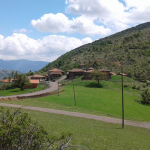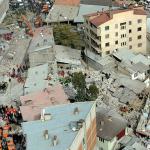Transportation and Supply Chain Resilience in the United Republic of Tanzania
ABSTRACT
The economy of the United Republic of Tanzania is growing fast but remains vulnerable to disasters, which are likely to worsen with climate change. Its transportation system, which mainly consist of roads, often get disrupted by floods. How could the resilience of the transportation infrastructures be improved? We formulate a new type of model, called DisruptSCT, which brings together the strength of two different approaches: network criticality analyses and input–output models. Using a variety of data, we spatially disaggregate production, consumption, and input–output relationships. Plugged into a dynamic agent-based model, these downscaled data allow us to simulate the disruption of transportation infrastructures, their direct impacts on firms, and how these impacts propagate along supply chains and lead to losses to households. These indirect losses generally affect people that are not directly hit by disasters. Their intensity nonlinearly increases with the duration of the initial disruption. Supply chains generate interdependencies that amplify disruptions for nonprimary products, such as processed food and manufacturing products. We identify bottlenecks in the network. But their criticality depends on the supply chain we are looking at. For instance, some infrastructures are critical to some agents, say international buyers, but of little use to others. Investment priorities vary with policy objectives, e.g., support health services, improve food security, promote trade competitiveness. Resilience-enhancing strategies can act on the supply side of transportation, by improving the quality of targeted infrastructure, developing alternative corridors, building capacity to accelerate post-disaster recovery. On the other hand, policies could also support coping mechanisms within supply chains, such as sourcing and inventory strategies. Our results help articulate these different policies and adapt them to specific contexts.




